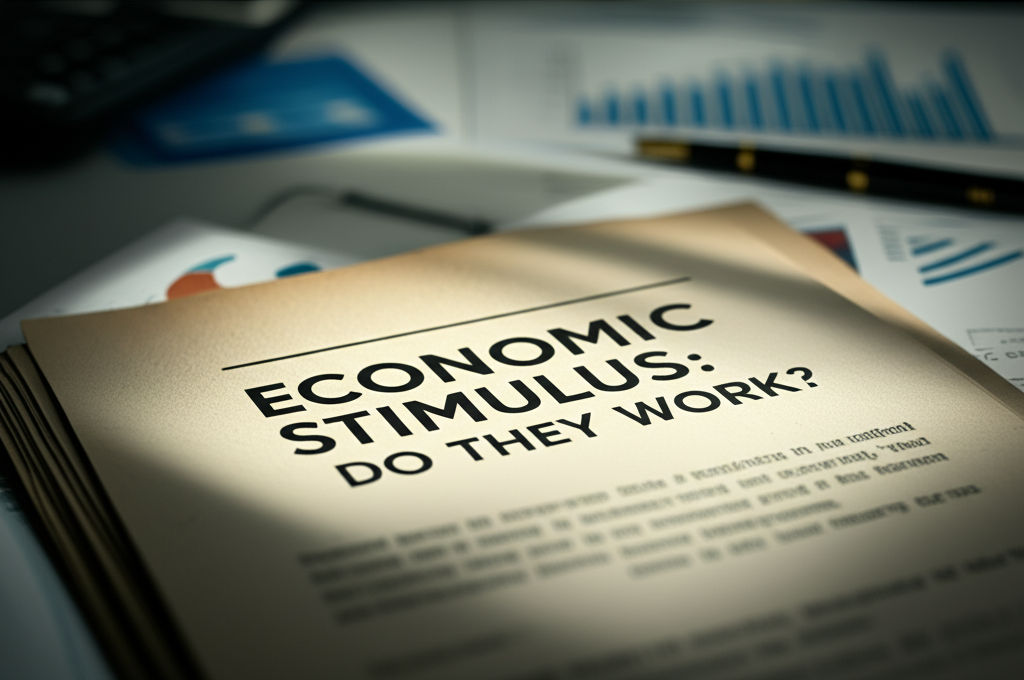Supply & Demand: Beginner's Guide
Emily Willis

Photo: Supply & Demand: Beginner's Guide
Understanding Supply and Demand: A Beginner's Guide to Market Forces
Have you ever wondered why the price of avocados skyrockets in winter, or why concert tickets for a popular band sell out in minutes at exorbitant prices? The answers to these everyday economic mysteries lie in two fundamental concepts: supply and demand. These seemingly simple ideas are the invisible hands that shape our markets, influencing everything from the cost of your morning coffee to the global price of oil.
For anyone looking to grasp the basics of how markets function, understanding supply and demand is the ultimate starting point. It’s not just for economists; it’s a crucial insight for consumers, business owners, and anyone curious about the world around them. This beginner's guide will demystify these core economic principles, breaking down their individual roles and, more importantly, how their dynamic interplay determines prices and quantities in virtually every market.
What is Demand? The Consumer's Voice in the Market
At its core, demand represents the desire and ability of consumers to purchase goods and services at various prices. It's more than just wanting something; it's wanting it and being able to afford it. Think of it as the collective voice of buyers in the marketplace.
The Law of Demand: Price and Quantity's Inverse Dance
The Law of Demand is one of the most fundamental economic concepts. It states that, all else being equal, as the price of a good or service increases, the quantity demanded by consumers will decrease. Conversely, as the price decreases, the quantity demanded will increase. This inverse relationship makes intuitive sense: people generally buy more of something when it's cheaper and less when it's expensive.
Consider this: When your favorite coffee shop offers a discount on lattes, you might buy one every day. But if the price doubles, you might cut back to just a few times a week, or even switch to making coffee at home. This simple example illustrates the Law of Demand in action.
Factors Influencing Demand: What Makes Consumers Buy More (or Less)?
While price is a major driver, several other factors can shift the entire demand curve, meaning consumers are willing to buy more or less at every given price. These are often called "demand shifters":
- Consumer Income: If people have more money, they generally demand more goods and services, especially for normal goods (e.g., organic food, vacations). For inferior goods (e.g., instant noodles, public transport), demand might decrease as income rises.
- Tastes and Preferences: Trends, fads, and changing consumer preferences can significantly impact demand. Think of the surge in demand for plant-based foods as health and environmental awareness grows.
- Price of Related Goods:
- Substitutes: If the price of a substitute good (something that can be used in place of another) decreases, demand for the original good might fall. For example, if the price of tea drops significantly, some coffee drinkers might switch, reducing coffee demand.
- Complements: If the price of a complementary good (something used together with another) increases, demand for the original good might also fall. If the price of gasoline rises sharply, the demand for large, fuel-inefficient SUVs might decrease.
- Consumer Expectations: If consumers expect prices to rise in the future (e.g., anticipating a sale ending), they might increase their current demand. Conversely, if they expect prices to fall, they might postpone purchases.
- Market Size/Population: A larger population or an increase in the target demographic for a product will naturally lead to higher overall demand.
Understanding these market dynamics helps businesses anticipate changes in consumer behavior and adjust their pricing strategy.
What is Supply? The Producer's Response to Demand
While demand reflects the buyer's side, supply represents the seller's side of the market. It refers to the quantity of a good or service that producers are willing and able to offer for sale at various prices. Producers, whether they're farmers, manufacturers, or service providers, are driven by the desire to make a profit.
The Law of Supply: Price and Quantity's Direct Relationship
The Law of Supply states that, all else being equal, as the price of a good or service increases, the quantity supplied by producers will also increase. Conversely, as the price decreases, the quantity supplied will decrease. This direct relationship is logical: higher prices mean greater potential profits, incentivizing producers to make and sell more.
For instance: If the market price for wheat rises significantly, farmers might be motivated to plant more wheat in the next season, or even shift land away from other crops to increase their supply. If the price drops, they might plant less or even consider alternative crops.
Factors Influencing Supply: What Makes Producers Offer More (or Less)?
Just like demand, several factors can shift the entire supply curve, meaning producers are willing to offer more or less at every given price
Latest ✨
View Allfinding a conducive study environment to enhance focus and concentration. It provides tips on understanding your needs, exploring different study options, transforming your space, and developing focused study habits.
Emily Willis
Deflation explained: Discover why falling prices can harm the economy. Learn its causes, effects, and how to protect your finances.
Emily Willis
Demystify venture capital funding! This guide helps aspiring entrepreneurs secure VC, understand its benefits, and determine if it's right for their high-growth...
Emily Willis
sleep for physical and mental well-being, discussing the benefits of sleep such as physical restoration, brain function, emotional regulation, concentration, and reduced risk of chronic diseases. It explains the different stages of the sleep cycle and provides guidelines for how much sleep individuals of different ages need.
Emily Willis
Business
View All
June 8, 2025
Team Building Activities for WorkUnlock workplace synergy! Discover how effective team building activities boost communication, engagement, innovation, and productivity for high-performing team...
Emily Willis

August 4, 2024
The Importance of Financial Management for Small and Medium Enterprises (SMEs)emphasizes the importance of effective financial management for small and medium enterprises (SMEs) in a competitive business environment.
Emily Willis

June 9, 2025
Cloud Computing for Small BusinessUnlock growth & efficiency! Discover how cloud computing empowers small businesses with cost savings & agility in the digital age.
Emily Willis
Economy
View AllUnpack the 17 Sustainable Development Goals (SDGs): a global blueprint addressing poverty, climate change, and inequality for a sustainable future.
Read MoreUnlock the secret of price elasticity! Learn how price changes affect demand, revenue, and your everyday purchasing decisions. Essential for businesses & shoppe...
Read MoreEconomic Stimulus: Do they work? Unpack government's toolkit, from fiscal to monetary policy, and understand their true impact on your economy.
Read MoreEntertainment
View All
August 5, 2024
Music Universal Language: Connecting and Inspiring Across CulturesMusic has the power to transcend language barriers and connect people on a deep emotional level. It serves as a bridge between cultures, fostering understanding and appreciation for diversity. The universality of rhythm and melody creates a sense of unity, while the diversity of musical styles allows for exploration and creativity.
Emily Willis

August 4, 2024
Profiles of Famous Artists Who Inspire the Younger Generationthe inspirational aspects of famous artists such as Vincent van Gogh, Frida Kahlo, Pablo Picasso, Banksy, Yayoi Kusama, Jean-Michel Basquiat, Georgia O'Keeffe, Andy Warhol, Kehinde Wiley, and Ai Weiwei. It highlights their perseverance, innovation, authenticity, social commentary, mental health advocacy, and representation, among other qualities, and how these aspects continue to inspire young artists to pursue their creative dreams.
Emily Willis

August 4, 2024
The Latest Music Trends, Artists Influencing Pop Culture, and How Digital Platforms Facilitate the Distribution of Music GloballyThe music industry is constantly changing due to consumer preferences, technology, and the influence of artists. Digital platforms have revolutionized music creation, distribution, and consumption, leading to genre fusion, the rise of independent artists, and collaborative projects. Influential artists like Billie Eilish, BTS, and Taylor Swift have shaped pop culture globally. Streaming services, social media, and direct-to-fan engagement have transformed music distribution. Digital platforms also promote cultural diversity and inclusivity, expand markets and revenue, and drive technological advancements. The industry is also focusing on sustainability and ethical practices. To succeed in the future, stakeholders must embrace digital transformation and champion inclusivity.
Emily Willis
Health
View AllQuality sleep is essential for overall health and well-being, impacting physical, cognitive and emotional functioning. Lack of quality sleep can lead to a variety of health issues, including weakened immune function, heart problems, weight gain and cognitive impairment.
Emily Willis
Regular physical activity is crucial for maintaining long-term health and well-being. It has numerous benefits, including improving cardiovascular health, aiding in weight management, enhancing mental health, strengthening bones, boosting immune function, and promoting longevity.
Emily Willis
Heart disease is a leading cause of death globally, but early detection and prevention strategies can reduce its impact. This article discusses the importance of early detection, common risk factors, preventive measures, and lifestyle changes for heart health. Understanding heart disease, recognizing symptoms, and undergoing regular screenings are crucial. Common risk factors include high blood pressure, high cholesterol, diabetes, smoking, obesity, physical inactivity, and family history. Symptoms of heart disease include chest pain, shortness of breath, fatigue, irregular heartbeat, and swelling. Diagnostic tests and screenings include blood pressure measurement, cholesterol screening, blood glucose test, ECG, stress test, and imaging tests. Preventive measures include adopting a heart-healthy diet, regular physical activity, quitting smoking, managing stress, maintaining a healthy weight, and limiting alcohol consumption. Medications and treatment options may be necessary for individuals at high risk or diagnosed with heart disease.
Emily Willis
Trending 🔥
View All
2
3
4
5
6
7
8
10
Lifestyle


Sports
View AllAugust 5, 2024
Celebrating Sports Legends: Honoring Iconic Figures and Their Enduring Impact
Read MoreAugust 5, 2024
Sportsmanship in the Spotlight: Cultivating Respect, Integrity, and Ethical Behavior
Read MoreTechnology
View All
August 4, 2024
Bridging the Digital Divide: Ensuring Everyone Has Access to Technology
we can bridge this gap and create a more inclusive digital landscape.

August 4, 2024
The Rise of Edge Computing: Transforming Data Processing
Edge computing is a distributed computing model that processes data closer to its source, reducing latency, saving bandwidth, and enhancing security. It is transforming industries such as manufacturing, healthcare, retail, transportation, and energy by enabling real-time data processing and improving operational efficiency.

August 4, 2024
The Rise of Blockchain Technology: Applications Beyond Cryptocurrency
Blockchain technology, initially associated with cryptocurrencies, has expanded to have diverse applications across industries. It is a decentralized digital ledger that ensures secure, transparent, and immutable transactions. Beyond cryptocurrency, blockchain has been applied to supply chain management, healthcare, voting systems, smart contracts, digital identity verification, real estate transactions, and supply chain finance. Future trends include enhancing interoperability, addressing scalability issues, and exploring regulatory frameworks. Overall, blockchain technology has the potential to revolutionize various sectors by enhancing efficiency, security, and trust in operations.

August 4, 2024
All-Time High Cybersecurity Breach: How to Safeguard Your Company and Personal Information
threat of cybersecurity breaches in today's digital age, highlighting factors contributing to the rise in cyberattacks such as increased reliance on technology, evolving threats, remote work, and profit motive for cybercriminals.


















